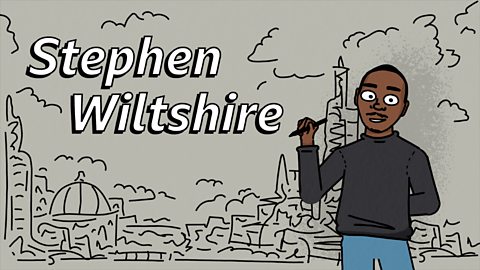Key facts about comics
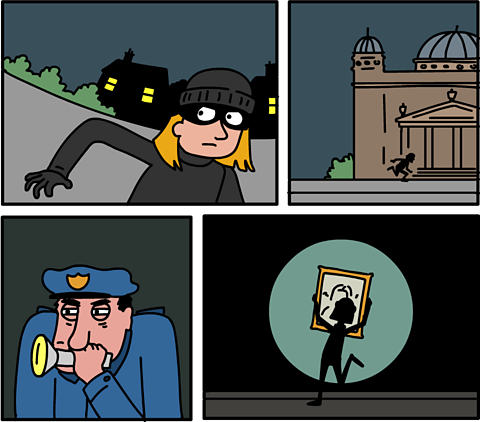
This guide was produced in partnership with Art Fund
A comic combines words and pictures in a sequenceA specific order. to tell a story or share information.
Comics have unique features including:
- individual panelAn individual picture, usually in a frame, showing a moment in time.
- speech/thought bubbleA shape containing words either spoken or thought by a character.
- sound effects
- motion linesMarks made to show the movement of a character or object.
Comics are a mediumA way in which something is presented. Examples of other mediums, also known as media are newspaper, film or theatre. and can be in any genreA type of story. Examples of genres are fable, fantasy, historical fiction or biography.. This means comics can be about anything.

What were the first comics?
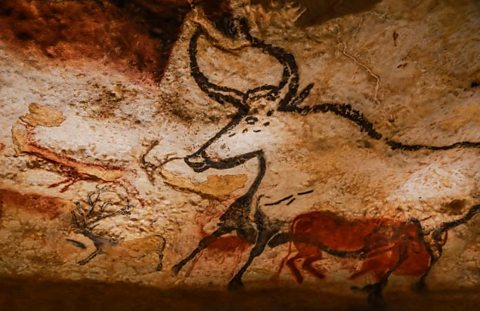
The idea of comics has been around for thousands of years.
Famous early examples that could be thought of as comics include the Lascaux cave paintings in France.
Cave artists used natural materials to paint animals and people on the walls.
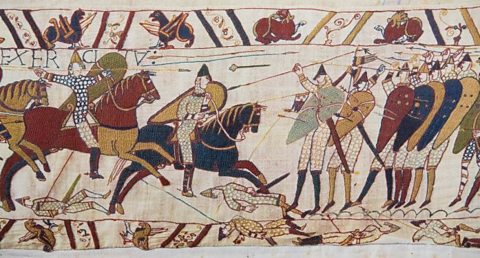
Another example is the Bayeux Tapestry which shows the Battle of Hastings in 1066.
It is made up of lots of different panels which show different parts of the story.
The tapestry is 70 metres long and made from fabric.

Watch: Making a comic
Artist Mollie Ray makes a comic
Mollie Ray: Hi, I'm Mollie Ray. I'm a comic artist.
Today I'm going to show you how to make a comic.
A comic can be anything, any story and you can take inspiration from everything and anything around you.
So I went to Keswick Museum and I did some observational drawing of a badger and having had conversations with peopleafterwards who had said they've never seen a badger before that became the idea for my comic.
What is Badger doing if we never see Badger?
So when I'm starting the comic, I'm going to do a large panel frame so that I can set the scene and introduce the character, but also introduce the idea.
And I want to get Badger into the first scene.
But the way that I'm going to draw her is that you can tell it's a badger, but you still can't properly see her.
And then I move on to three smaller panels to keep the story moving along.
But I still haven't focussed on Badger close up because we know that she's busy, so she's even darting around the panels.
And then I move over to my last panel, which is going to be the biggest panel, and it's going to sum up the whole point of the comic.
It's going to sum up the story so I can zoom out and show how the story ends.
Nobody ever sees Badger.
Badger is too busy ruling her kingdom underground.
Why are comics called comics?
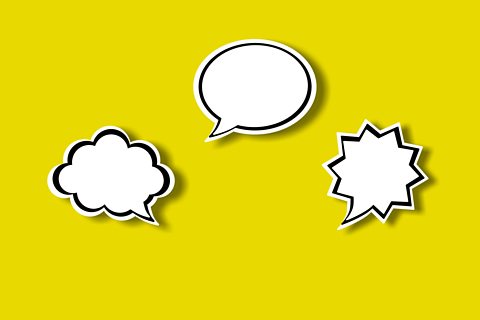
The name ‘comic’ comes from the word 'comical', which means funny. Short cartoon strips made in the USA were given this name in around the early 1900s because they were made to make readers laugh.
Today, comics can be about anything and don’t have to be funny.
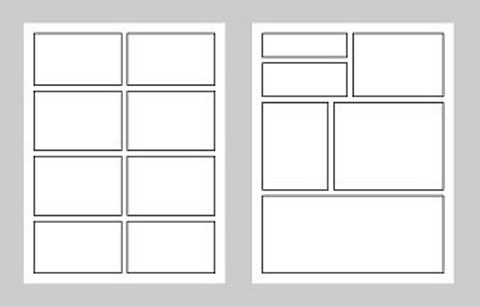
In other languages spoken around the world, comics have different names.
Comics in Italy are called fumetti, which means little puff of smoke. The name comes from the shape and colour of the speech or thought bubbles used when a character speaks or thinks.

Who makes comics?

Some comics are created by a team of creators doing different roles, such as writers, illustratorA person who draws and designs pictures., letterersA person who creates or adds text to something like a sign or comic. and colouristA person who adds colour to drawings..
This can give people the opportunity to work to their individual strengths, be it writing or drawing.

Did you know?

Some comics can be described as silent comics because there is no text in the story.
A few words may still be used in the form of signs or sound effects.
It's a technique used in some comics, as well as graphic novelA long story told mostly in pictures but with some words. and picture books for younger readers.
The Snowman by Raymond Briggs is an example of how to tell a story without text. Instead, the story is told through placing panels of images in a sequence.
Quiz
Play Art Gallery Rescue. gamePlay Art Gallery Rescue
Help Lily and Will rescue the art gallery!

SATs preparation resources. activitySATs preparation resources
Get ready for the SATs papers with videos, activities, quizzes and games to refresh your knowledge and practise your skills.

More on Drawing
Find out more by working through a topic
- count5 of 6

- count6 of 6

- count1 of 6
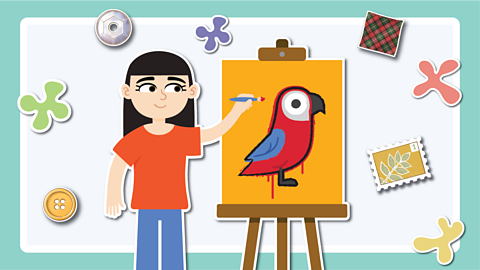
- count2 of 6
